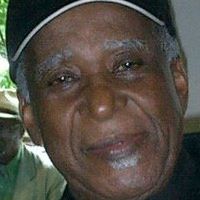George T Monroe
Deceased
from Seymour, CT
- Also known as:
-
- Gerald Monroe
- Phone and address:
- 29 Greenwood Cir, Seymour, CT 06483
George Monroe Phones & Addresses
- 29 Greenwood Cir, Seymour, CT 06483
- 35 Kettle Rd, Norwalk, CT 06850 • 2038461292
Work
-
Company:McInnes Cooper
-
Address:
Specialities
Real Estate • Corporate Law
Resumes

Development Lead
view sourceLocation:
Seymour, CT
Industry:
Business Supplies And Equipment
Work:
Pitney Bowes
Development Lead
Development Lead

Pb Fellow
view sourceLocation:
Seymour, CT
Industry:
Business Supplies And Equipment
Work:
Pitney Bowes
Senior Principle Engineer
Pitney Bowes Mar 1992 - Mar 2002
Principle Engineer
Pitney Bowes Sep 1987 - Mar 1992
Senior Engineer
PerkinElmer Mar 1985 - Sep 1987
Engineer
PerkinElmer Jan 1983 - Mar 1985
Engineer
Senior Principle Engineer
Pitney Bowes Mar 1992 - Mar 2002
Principle Engineer
Pitney Bowes Sep 1987 - Mar 1992
Senior Engineer
PerkinElmer Mar 1985 - Sep 1987
Engineer
PerkinElmer Jan 1983 - Mar 1985
Engineer
Education:
University of Bridgeport 1987 - 1989
Bridgeport Engineering Inst 1983 - 1985
Norwalk State Technical College 1973 - 1975
ASEE, Electrical Engineering
Bridgeport Engineering Inst 1983 - 1985
Norwalk State Technical College 1973 - 1975
ASEE, Electrical Engineering
Skills:
C++
C
Debugging
Embedded Software
Embedded Systems
System Design
System Architecture
Software Development
Microcontrollers
Eclipse
Unix
Hardware Design
Software Design
Distributed Systems
Visual Studio
Tcp/Ip
Device Drivers
Sql
Electronics
Multithreading
Databases
Linux
Java
Subversion
Clearquest
Object Oriented Design
Web Services
Integration
Windows
Xml
Agile
Operating Systems
Agile Methodologies
Clearcase
Usb
Software Engineering
Hardware Architecture
Systems Engineering
Testing
C
Debugging
Embedded Software
Embedded Systems
System Design
System Architecture
Software Development
Microcontrollers
Eclipse
Unix
Hardware Design
Software Design
Distributed Systems
Visual Studio
Tcp/Ip
Device Drivers
Sql
Electronics
Multithreading
Databases
Linux
Java
Subversion
Clearquest
Object Oriented Design
Web Services
Integration
Windows
Xml
Agile
Operating Systems
Agile Methodologies
Clearcase
Usb
Software Engineering
Hardware Architecture
Systems Engineering
Testing
Interests:
Social Services
Economic Empowerment
Civil Rights and Social Action
Environment
Education
Poverty Alleviation
Science and Technology
Disaster and Humanitarian Relief
Human Rights
Health
Economic Empowerment
Civil Rights and Social Action
Environment
Education
Poverty Alleviation
Science and Technology
Disaster and Humanitarian Relief
Human Rights
Health

George Monroe
view source
President
view sourceWork:
Monroe's Quality Painting
President
President

George R Monroe
view source
George Monroe
view source
George Monroe
view source
George Monroe
view sourceLawyers & Attorneys

George Monroe - Lawyer
view sourceOffice:
McInnes Cooper
Specialties:
Real Estate
Corporate Law
Corporate Law
ISLN:
900032613
Admitted:
1994
University:
Dalhousie University, 1988; Dalhousie University, M.B.A., 1990
Law School:
University of New Brunswick, LL.B., 1993
Medicine Doctors

George C. Monroe
view sourceSpecialties:
Internal Medicine
Work:
Carolinas Physicians NetworkKannapolis Internal Medicine
201 Dl Earnhardt Blvd STE 200, Kannapolis, NC 28081
7044037300 (phone), 7044037450 (fax)
201 Dl Earnhardt Blvd STE 200, Kannapolis, NC 28081
7044037300 (phone), 7044037450 (fax)
Education:
Medical School
Baylor College of Medicine
Graduated: 1975
Baylor College of Medicine
Graduated: 1975
Procedures:
Arthrocentesis
Lumbar Puncture
Electrocardiogram (EKG or ECG)
Pulmonary Function Tests
Vaccine Administration
Lumbar Puncture
Electrocardiogram (EKG or ECG)
Pulmonary Function Tests
Vaccine Administration
Conditions:
Acute Bronchitis
Atrial Fibrillation and Atrial Flutter
Bronchial Asthma
Chronic Renal Disease
Diabetes Mellitus (DM)
Atrial Fibrillation and Atrial Flutter
Bronchial Asthma
Chronic Renal Disease
Diabetes Mellitus (DM)
Languages:
English
Description:
Dr. Monroe graduated from the Baylor College of Medicine in 1975. He works in Kannapolis, NC and specializes in Internal Medicine. Dr. Monroe is affiliated with Carolinas Medical Center-NE.

George A. Monroe
view sourceSpecialties:
Pediatrics, Adolescent Medicine
Work:
George A Monroe MD
7777 Frst Ln STE C525, Dallas, TX 75230
9725667011 (phone), 9725666441 (fax)
7777 Frst Ln STE C525, Dallas, TX 75230
9725667011 (phone), 9725666441 (fax)
Education:
Medical School
University of Texas Southwestern Medical Center at Dallas
Graduated: 1965
University of Texas Southwestern Medical Center at Dallas
Graduated: 1965
Procedures:
Hearing Evaluation
Psychological and Neuropsychological Tests
Vaccine Administration
Psychological and Neuropsychological Tests
Vaccine Administration
Conditions:
Acute Bronchitis
Acute Conjunctivitis
Acute Pharyngitis
Acute Sinusitis
Acute Upper Respiratory Tract Infections
Acute Conjunctivitis
Acute Pharyngitis
Acute Sinusitis
Acute Upper Respiratory Tract Infections
Languages:
English
Description:
Dr. Monroe graduated from the University of Texas Southwestern Medical Center at Dallas in 1965. He works in Dallas, TX and specializes in Pediatrics and Adolescent Medicine. Dr. Monroe is affiliated with Medical City Dallas Hospital.

George Alfred Monroe
view sourceSpecialties:
Pediatrics
Education:
The University of Texas Southwestern (1965)
Isbn (Books And Publications)


Name / Title
Company / Classification
Phones & Addresses
President, Principal
GDCTM LLC
Business Services at Non-Commercial Site
Business Services at Non-Commercial Site
322 Main St, Wallingford, CT 06492
57 Tremper Dr, Wallingford, CT 06492
2032654277
57 Tremper Dr, Wallingford, CT 06492
2032654277
Principal
MONROE BUSINESS SOLUTIONS LLC
Whol Office Equipment
Whol Office Equipment
2 Klarides Vlg Dr #219, Seymour, CT 06483
2038689484
2038689484
Incorporator
ACADEMIC EXCELLENCE, INC
Principal
ASH CREEK BUILDERS, LLC
Single-Family House Construction
Single-Family House Construction
55 Karen Dr, Norwalk, CT 06851
Incorporator
ARMOR DETECTIVE AGENCY, INC
Us Patents
-
Method For Providing For Programming Flash Memory Of A Mailing Apparatus
view source -
US Patent:6629317, Sep 30, 2003
-
Filed:Jul 30, 1999
-
Appl. No.:09/364081
-
Inventors:Wesley A. Kirschner - Hamden CT
Louis J. Loglisci - Stamford CT
George T. Monroe - Seymour CT
Richard A Rudolph - Newington CT -
Assignee:Pitney Bowes Inc. - Stamford CT
-
International Classification:G06F 9445
-
US Classification:717175, 717169, 711103, 705500
-
Abstract:A method providing for programming reprogramming at least some software into flash memory of a postage machine or other mailing apparatus. The method calls for providing the software to be programmed into the flash memory in at least two builds, with one build providing kernel software that includes the functionality needed for programming/reprogramming (including functionality for linking to a personal computer by which the software to be programmed may be provided), and the other build providing non-kernel software, usually routines providing application-oriented functionality, and not essential to programming the flash memory. The first build, of the at least two builds, is written into sectors of the flash memory that are then locked. The system provides, in some applications, for writing the non-kernel software using a paging algorithm that writes several sectors worth of non-kernel software at a time. Once the programming of the kernel software is completed, at least part of the flash memory, the part hosting the non-kernel software, can be programmed or reprogrammed using the functionality provided by the kernel software.
-
Method For Updating And Preserving Data When Performing A Software Upgrade
view source -
US Patent:7222128, May 22, 2007
-
Filed:Mar 29, 2004
-
Appl. No.:10/812375
-
Inventors:Mark N. Harris - New Haven CT, US
Derek DeGennaro - West Haven CT, US
Wesley A. Kirschner - Hamden CT, US
George T. Monroe - Seymour CT, US -
Assignee:Pitney Bowes Inc. - Stamford CT
-
International Classification:G06F 17/00
G06F 7/00 -
US Classification:707102, 707101
-
Abstract:The present invention relates to a method of converting data stored in one or mores files from a first format to a second format. The files include one or more records, with each record including one or more fields of data. Each of the records is associated with a first data map corresponding to the first format and a second data map corresponding to the second format. The method converts each file, record by record, using the information from the first and second data maps associated with the selected record. A determination is made as to whether each field is present in the second format, and if so, the field data is copied to a new record at a field location for the field that is set forth in the second data map.
-
Main Processor Initiating Command Timing Signal Via Dma To Coprocessor In Order To Synchronize Execution Of Instructions
view source -
US Patent:7949801, May 24, 2011
-
Filed:Jun 30, 2007
-
Appl. No.:11/772202
-
Inventors:George T. Monroe - Seymour CT, US
Linda Dore - Shelton CT, US
Michael LePore - Trumbull CT, US -
Assignee:Pitney Bowes Inc. - Stamford CT
-
International Classification:G06F 13/28
G06F 1/14 -
US Classification:710 25, 710 22, 710100, 710 48, 710220, 710 58, 712 32, 712 35
-
Abstract:Coprocessor systems for using a main microprocessor DMA channel to write to a port to control a coprocessor system are provided. In certain examples, coprocessor systems are described using a main CPU counter to trigger a DMA channel to perform a single byte transfer to a port used to control coprocessor command timing.
-
Secure Software System And Method For A Printer
view source -
US Patent:20070150754, Jun 28, 2007
-
Filed:Dec 22, 2005
-
Appl. No.:11/317464
-
Inventors:Steven Pauly - New Milford CT, US
Robert Arsenault - Stratford CT, US
Gary Jacobson - Norwalk CT, US
George Monroe - Seymour CT, US
Walter Baker - Stratford CT, US
Wesley Kirschner - Farmington CT, US
Robert Sisson - Trumbull CT, US
Sung Chang - Stamford CT, US
Elaine Cristiani - Stratford CT, US -
International Classification:G06F 12/14
-
US Classification:713193000
-
Abstract:A postal security device (PSD) includes a microprocessor including an internal random access memory (RAM) and an internal flash memory in which is stored at least one secure datum, and at least one external memory coupled to the microprocessor in which is stored at least one non-secure datum and not one of the at least one secure datum.
-
System And Method To Enable External Processing Device Running A Cloud Application To Control A Mail Processing Machine
view source -
US Patent:20130318583, Nov 28, 2013
-
Filed:May 24, 2012
-
Appl. No.:13/479751
-
Inventors:Walter J. Baker - Stratford CT, US
Wesley A. Kirschner - Farmington CT, US
George T. Monroe - Seymour CT, US
Sambasivam Thillaikumaran - Southbury CT, US -
Assignee:Pitney Bowes Inc. - Stamford CT
-
International Classification:G06F 15/173
G06F 21/00
H04L 9/32 -
US Classification:726 7, 709224
-
Abstract:A network connectivity device that when coupled to a mail processing machine enables a cloud application running on a personal computer or other device to interface with and control the mail processing machine without requiring any software to be installed on the personal computer other than a web browser. The network connectivity device plugs into a standard USB port on the mail processing machine to allow wired or wireless connectivity to a network. There is no software or other code required to run on the personal computer other than a standard web browser running a hosted web application. The network connectivity device allows the mail processing machine to be found and addressed by the hosted web application. This allows a user to control operations of the mail processing machine, as well as giving the mail processing machine network connectivity for outside world communication activities.
-
Method And System For Multiple Servers To Share A Postal Security Device
view source -
US Patent:20140032807, Jan 30, 2014
-
Filed:Jul 26, 2012
-
Appl. No.:13/558406
-
Inventors:George T. MONROE - Seymour CT, US
-
Assignee:Pitney Bowes Inc. - Stamford CT
-
International Classification:G06F 13/14
G06F 15/16 -
US Classification:710305
-
Abstract:Systems and methods that allow a PSD to be physically shared by multiple servers such that if a server fails, another server can be utilized as a backup server for the PSD without any manual intervention or moving of the PSD and without risking loss of data from the PSD. A PSD is interfaced by an interface device to a system level bus that allows for multiple initiators. An initiator is any server that can access and issue commands over the system level bus to access the PSD. When one of the servers fails, the functionality of the server can be rolled to a backup server which will be able to access the PSD over the bus.
-
Disabling A Mailing Machine When A Print Head Is Not Installed
view source -
US Patent:59560517, Sep 21, 1999
-
Filed:May 29, 1997
-
Appl. No.:8/864942
-
Inventors:Brad L. Davies - Trumbull CT
George T. Monroe - Seymour CT
Maria P. Parkos - Southbury CT -
Assignee:Pitney Bowes Inc. - Stamford CT
-
International Classification:B41J 300
B41J 29393 -
US Classification:347 2
-
Abstract:Mailing machine including a controller, a printer module including a connector, a print head controller for producing print data signals necessary to print a postal indicia on an envelope and a replaceable print head cartridge having a plurality of print elements which are selectively energizable in response to the print data signals. The print head cartridge is detachably mounted to the connector. The controller in operative communication with the printer module for: determining if a valid print head cartridge is installed; and if a valid print head cartridge is not installed, preventing the print data signals from reaching the connector.
-
Configurable Peripheral Management System
view source -
US Patent:60291559, Feb 22, 2000
-
Filed:Jul 2, 1997
-
Appl. No.:8/887439
-
Inventors:Edward R. Bass - Trumbull CT
Robert L. Davis - New Canaan CT
Konstantin G. Kodonas - Norwalk CT
George T. Monroe - Seymour CT -
Assignee:Pitney Bowes Inc. - Stamford CT
-
International Classification:G06F 1700
-
US Classification:705401
-
Abstract:A configurable peripheral management system includes a peripheral management device which comprises a microprocessor for executing peripheral management instructions stored in a persistent memory for performing operations such as polling a peripheral device. The peripheral management device is coupled to a host computer over a serial line, through which new peripheral management instructions can be downloaded for storage in the persistent memory.
Classmates

George A. Monroe, M.D. (M...
view sourceSchools:
Lamar Elementary School San Antonio TX 1945-1948, Woodrow Wilson Elementary School Houston TX 1948-1950, Lanier Junior High School Houston TX 1950-1953
Community:
Kathy Keen

George Monroe
view sourceSchools:
Hicksville High School Hicksville OH 1969-1973
Community:
Bernard Gecowetts, Staci Douglas, James Quaintance, Paul Greutman

George Monroe
view sourceSchools:
Magrath Elementary School Norwalk CT 1960-1966, Ponus Ridge Middle School Norwalk CT 1967-1969
Community:
Donna Kennedy, Jeana Hayley

George Monroe
view sourceSchools:
Matoaca High School Matoaca VA 1970-1974
Community:
Joyce Fenner, Diana Patton, Suzanne Ashley

George Monroe
view sourceSchools:
LaGuardia High School of Music & Art & Performing Arts New York NY 1999-2003
Community:
Linda Frazier, Claire Nicholls, Jill Breedlove

George Monroe
view sourceSchools:
LaGuardia High School of Music & Art & Performing Arts New York NY 1999-2003, Laguardia High School New York NY 1999-2003
Community:
Linda Frazier, Claire Nicholls, Jill Breedlove

George Monroe
view sourceSchools:
Lakewood High School Salemburg NC 1979-1983
Community:
Tammy Simmons, Barbara Goodman, Desriee Jones, Norma Underwood, Danny Hall

George Monroe
view sourceSchools:
Noble Elementary School West Haven CT 1966-1972, Dr. Carl C. Giannotti Middle School West Haven CT 1972-1972, May V. Carrigan Middle School West Haven CT 1972-1975
Community:
John Moore
Youtube
Myspace
Googleplus

George Monroe

George Monroe

George Monroe

George Monroe

George Monroe

George Monroe

George Monroe

George Monroe

George Monroe
view source
George Monroe
view source
George Monroe
view source
George C Monroe
view source
George Jr Monroe
view source
George Gerrell Monroe
view source
George Alfred Monroe
view source
George C Monroe
view sourceFlickr
Get Report for George T Monroe from Seymour, CTDeceased


![[HD: Last Mohicans] Surrender of George Monro (Bri... [HD: Last Mohicans] Surrender of George Monro (Bri...](https://i.ytimg.com/vi/zRzFTcEtA3U/hq720.jpg?sqp=-oaymwEcCNAFEJQDSFXyq4qpAw4IARUAAIhCGAFwAcABBg==&rs=AOn4CLA9OkG4EuS5NYT3PmRm1JrsERChRg)
















